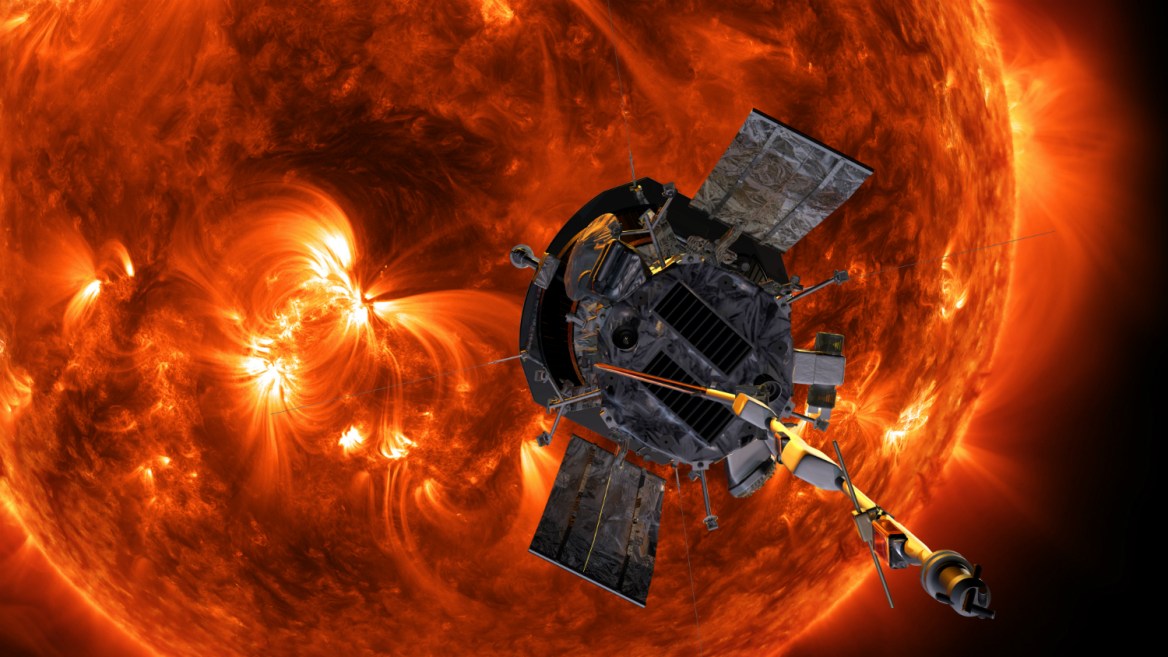This content has been archived. It may no longer be relevant

There is no shortage of innovation in NASA’s mission roster. Whether you are landing on Mars or entering orbit around an alien planet, missions to space require mind-blowing technological advances. This year the most ingenious spacecraft accolade (and our award for Innovation of the Year) goes to NASA’s Parker Solar Probe. This spacecraft is going to the most deadly place in the solar system—our sun. And it’s not just getting kind of close: as NASA likes to say, it’s going to “kiss” our hellishly hot host star.
No space agency has ever sent a spacecraft so close to the sun before. Previous attempts have inched as near as 25 million miles from the surface, but Parker Solar Probe will orbit the sun at an average distance of only 4 million miles. In order to do this and not melt into a gooey pile of metal, it is equipped with a revolutionary heat shield. The surface of the sun averages around 10,000 degrees Fahrenheit, but Parker Solar Probe won’t get that close. The team expects the spacecraft to reach temperatures of around 2,500 degrees Fahrenheit at most during its 6.5-year mission, and it’s built to beat that heat without a problem.
The heat shield is made up of a carbon-carbon material, similar to what is found in some golf clubs, but this carbon has been heated up. The shield also features a special carbon foam that is made up of 97% air. With a nice coating of white paint on the front to deflect the sun’s rays, this spacecraft is all set to survive an otherwise deadly environment. And all of that protection is only 8 feet in diameter, 4.5 inches thick, and 160 pounds.
Read the complete Article, courtesy of Shannon Stirone and Popular Science

